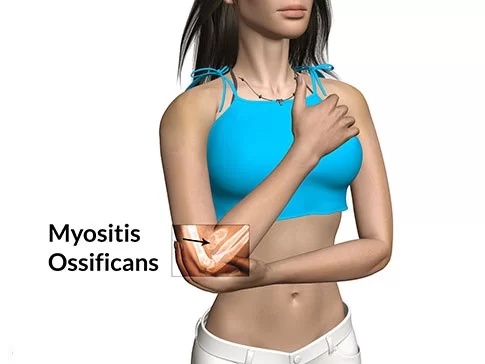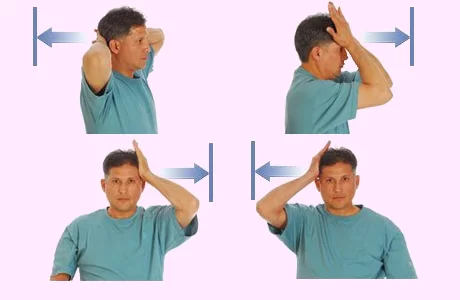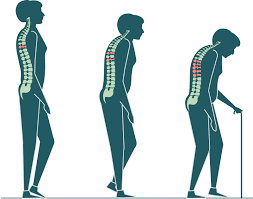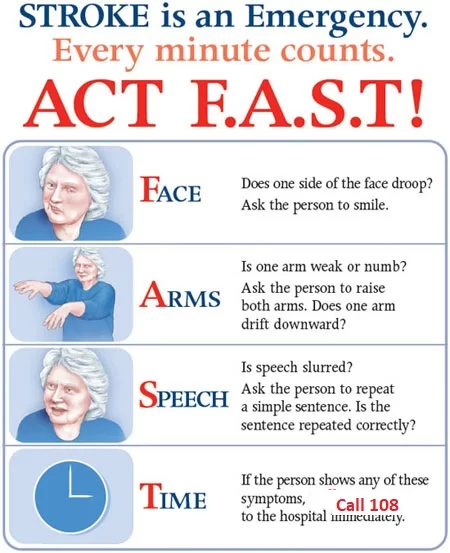Myositis ossificans (MO): Physiotherapy Treatment
Table of Contents
What is Myositis ossificans (MO)?
Myositis ossificans (MO) occurs when bone or bone-like tissue grows where it’s not supposed to. It most commonly happens in your muscle after an injury — like when you get hit hard in the thigh during a soccer game or maybe after a car or bicycle accident. Myositis ossificans comprises two syndromes characterized by heterotopic ossification (calcification) of muscle. About 80 percent of the time, these bony growths develop in the muscles of your thigh or upper arm.
Classification of Myositis ossificans (MO)
- In the first, and by far most common type, nonhereditary myositis ossificans, calcifications occur at the site of injured muscle, most commonly in the arms or in the quadriceps of the thighs.
The term myositis ossificans traumatica is sometimes used when the condition is due to trauma. Also known as Myositis ossificans circumscripta is another synonym of myositis ossificans traumatica refers to the new extraosseous bone that appears after trauma. - The second condition, myositis ossificans progressiva (also referred to as fibrodysplasia ossificans progressiva) is an inherited affliction, autosomal dominant pattern, in which the ossification can occur without injury, and typically grows in a predictable pattern. Although this disorder can be passed to offspring by those afflicted with FOP, it is also classified as nonhereditary, as it is most often attributed to a spontaneous genetic mutation upon conception.
Causes of Myositis ossificans (MO)
Myositis ossificans usually occurs when a person has experienced a single traumatic injury, such as sustaining a hit while playing football or soccer that causes a deep muscle bruise.
It can also happen when there is a repetitive injury to the same area, such as in the thighs of horseback riders.
Sports injuries or accidents usually initiate MO. Adolescents and young adults in their 20s are most likely to develop MO. It’s rare for children aged 10 and under to get the condition. People who have paraplegia are also prone to develop MO, but usually with no evidence of trauma.
SIGNS & SYMPTOMS
Unlike other typical muscle strains or injuries, people with myositis ossificans may notice that their pain worsens with time instead of getting better.
Someone with this condition may also notice changes in the affected muscle, including:
- Warmth
- Swelling
- A lump or bump
- Decreased range of motion
- Tenderness
DIAGNOSIS
If it has been at least 2–3 weeks since the pain or other symptoms started, the doctor may order some imaging tests to look for evidence of bone growth in the soft tissue.
Your doctor may also order other imaging tests. These may include diagnostic ultrasound, MRI, CT, or bone scan.
X-ray: It can be difficult to diagnose myositis ossificans in the early stages with just an X-ray. Most X-rays will not show up any abnormalities in the first 2–3 weeks following the injury but will show changes after 3–4 weeks.
Ultrasound: Ultrasounds use sound waves to look at the soft tissues. They are one early diagnostic test that can be used to look for the changes associated with myositis ossificans. Ultrasonography depends on the ability of the person reading the scans, so many doctors do not often recommend it as the first test.
CT scan: Doctors can usually see the early development of bone tissue in soft tissues. However, it is not 100 percent reliable, and if a doctor suspects that someone has myositis ossificans, they may carry out additional testing to make the diagnosis.
Magnetic resonance imaging (MRI): An MRI is a preferred method of looking at soft tissue growths. A doctor may still order additional tests to compare and confirm a diagnosis.
A biopsy of the growth may also be taken and evaluated in a lab.
Treatment:
- Rest
- Immobilization
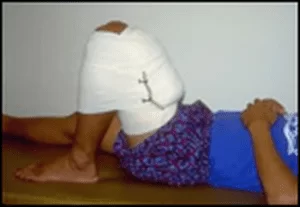
- Anti-inflammatory drugs
- physiotherapy management
- surgical debridement
Myositis ossificans usually resolves on its own. You may be able to prevent MO by properly taking care of your injury in the first two weeks. You can reduce inflammation by immobilizing the affected muscle with slight compression, icing, and elevation.
Rest: You don’t have to just lie there, but don’t stress the muscle too much.
Ice: Apply for 15 to 20 minutes at a time.
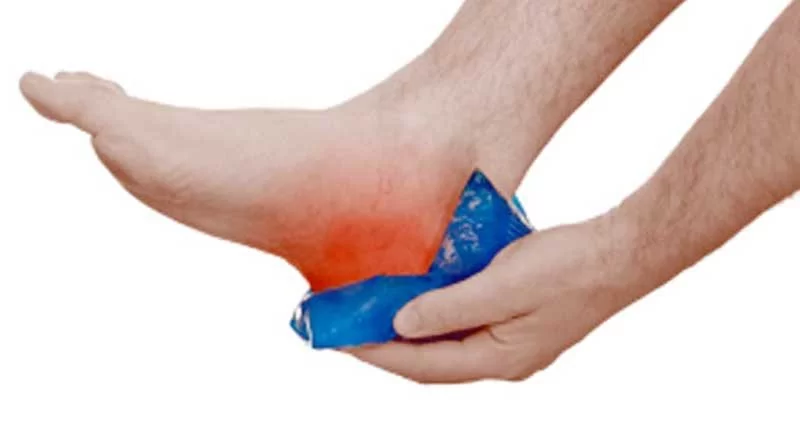
Compression: Wrap an elastic bandage firmly around your injury to minimize swelling and keep the area stable.
Elevation: Raise your injured limb above the level of your heart to help drain excess fluid from the area.
Non-painful stretching and strengthening: Gently stretch the affected muscle and start doing strengthening exercises when your doctor says it’s OK. Don’t perform any movements to the point of pain.
Medications and orthotics
You can take nonsteroidal anti-inflammatory drugs like ibuprofen (Advil) or naproxen (Aleve) to reduce pain and swelling. Topical treatments like Biofreeze or Tiger Balm can also help to ease the pain.
When your pain and movement allow you to get back to sports, wear some padding or other protection on the injured muscle to prevent additional damage.
Physiotherapy Treatment of Myositis ossificans
Rest
Icing the injury
Pulsed ultrasound and phonophoresis
Maintain available range of motion but avoid stretching and massage, until maturation.
Passive range of motion and mobilization: This is when a person or machine moves your body parts for you.
Active range of motion and mobilization: This is when you use your own strength to move your body parts.
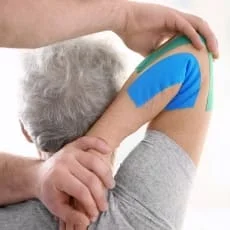
Iontophoresis with 2 % acetic acid solution.
Extracorporeal shock wave therapy

Surgical Management
Growth should not be removed in a premature stage as it will likely reoccur. The ossification becomes exuberant, infiltrates beyond the original site, and compresses the soft tissues around beyond hope of repair. When after serial x-rays the mass is dense, well delineated, and at a standstill, it may be safely removed. It may be possible to prevent myositis by aspirating the original haematoma.
PREVENTION
While it can be difficult to predict who will get myositis ossificans, it is important to treat every injury promptly using the R.I.C.E. method. This is:
- Rest
- Ice
- Compression
- Elevation
An athlete who sustains an injury may need to leave the game or event, especially if there is significant swelling or bruising.
Gentle stretching and range of motion exercises are also essential after an injury; myositis ossificans is more likely to affect a muscle that is not being used.
Doing too much too soon can worsen MO. But not working to recover your range of motion when the doctor says it’s safe may make your pain and stiffness last longer.
Over Exercise and Painful Exercise May Lead to Myositis Ossificans Too Many Times, So Avoiding Painful Exercise And Over Exercise And Take Enough Rest is Too Important in Physiotherapy Treatment.

